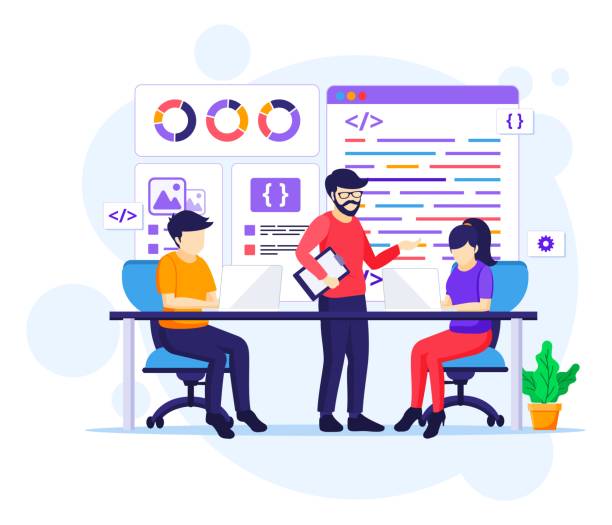Why is Multilingual Website Design So Important Today?
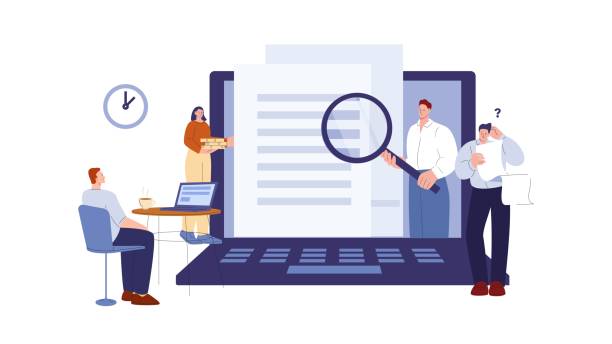
In today’s world, where geographical borders have faded thanks to the internet, #global_access to audiences has become more important than ever.
For businesses looking to expand their markets and attract international customers, multilingual website design is no longer a luxury, but a necessity.
This not only allows you to communicate with your audience in their native language but also enhances your business’s credibility and professionalism on a global scale.
Monolingual websites, regardless of the quality of their content, products, or services, limit themselves to a large portion of the world’s online population.
Imagine how much you can increase your reach by providing information in various languages, including English, Spanish, Chinese, Arabic, and German.
This approach is particularly crucial for companies planning to export or offer their services in different countries.
This type of multilingual web design helps you address the questions and needs of potential customers worldwide, significantly improving your conversion rates and sales.
For a small or large business, the ability to communicate with audiences in their native language not only leads to a better understanding of your message but also creates a greater sense of trust and comfort for the user, which significantly aids in their decision to purchase or use your services.
Beyond simply translating words, this approach also includes content localization, providing a completely personalized experience for each user.
In fact, a successful multilingual website design is a bridge to entering global markets and competing on the international stage.
Does your current website build the trust that potential customers should have in your business? If not, it’s time to get your professional and impactful corporate website with RasaWeb.
✅ Fully custom design tailored to your brand identity
✅ Increased lead generation and business credibility in the eyes of customers⚡ Contact us for a free consultation!
SEO Benefits and Market Expansion with Multilingual Websites

One of the biggest advantages of implementing multilingual website design is a significant improvement in search engine ranking (SEO) at an international level.
When your website is available in multiple languages, it signals to search engines like Google that you have relevant content for users in different parts of the world.
This makes your website appear higher in search results for similar keywords in various languages.
The correct use of Hreflang tags for each language version of the website prevents duplicate content issues and helps search engines display the correct language version to the appropriate users.
This not only increases organic traffic but also improves the quality of incoming traffic, as users searching in their native language are likely to spend more time on your site and have a lower bounce rate.
Market expansion truly happens; you are freed from geographical limitations and can introduce your products or services to millions of people worldwide.
This strategy allows you to create localized content, addressing the specific cultural and linguistic needs of each region, thereby establishing a deeper connection with your audience.
Investing in multilingual website design is not only an investment in international SEO but also a strategic investment for the long-term growth and sustainability of your business.
This action can lead to increased sales, improved brand awareness, and a significant competitive advantage in global markets.
An international website opens a gateway to countless opportunities in emerging and existing markets.
Technical Considerations in Multilingual Site Design, including URL Structure and Hreflang Tag
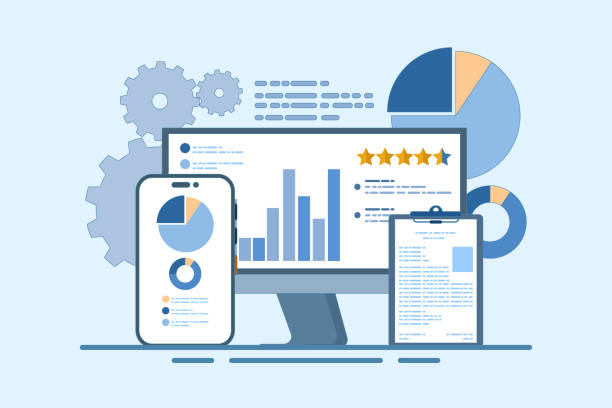
Correct implementation of multilingual website design requires attention to precise technical details to ensure both an excellent user experience and proper indexing of your content by search engines.
One of the most important technical considerations is the URL structure.
There are three main approaches for this: subdomains, subdirectories, and country code top-level domains (ccTLDs).
Each has its advantages and disadvantages; for example, ccTLDs like .fr for France or .de for Germany provide the strongest geographical signal to Google but are more complex to manage.
Subdirectories (e.g., yourdomain.com/fr) are the most common and manageable option, while subdomains (fr.yourdomain.com) are another option.
Choosing the right structure depends on your strategy and resources.
Another critical issue is the use of the Hreflang tag.
These tags tell search engines that there are different versions of a page for different languages or regions.
Incorrect use of Hreflang can lead to SEO problems, so precision in their implementation is crucial.
For each page, there must be an Hreflang tag for every language version of that page (including the original version) that points to the correct URL of that version.
This helps search engines prevent duplicate content and ensures that users are directed to the appropriate language version.
It is also necessary to consider factors such as choosing a suitable server for page loading speed in different geographical regions and using a CDN (Content Delivery Network) to improve performance.
Ultimately, multilingual website implementation must operate seamlessly and optimally from a technical standpoint to satisfy both users and search engines.
Failure to pay attention to these issues can render your efforts in translation and content ineffective.
Content Translation Strategies and Quality Preservation
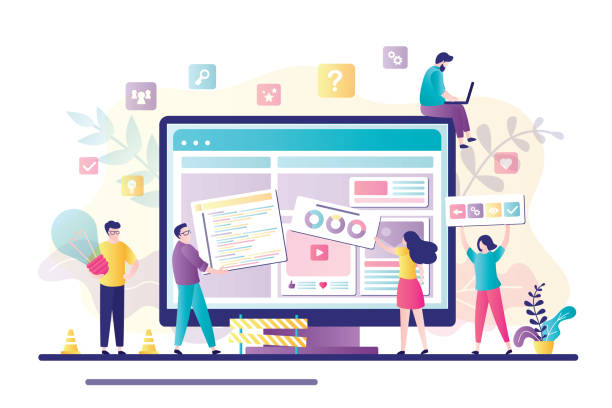
The success of multilingual website design heavily depends on the quality of content translation.
Simply translating words is not enough; content must be localized to match the culture, idioms, and linguistic sensitivities of the target audience in each region.
This process goes beyond merely changing the language; it includes adapting currency, date and time formats, phone numbers, and even colors and images to ensure the message resonates with the audience.
Choosing the right translation strategy is crucial.
Do you use machine translation, which is fast and inexpensive but has low accuracy and localization? Or do you opt for professional human translation, which is more accurate and higher quality but time-consuming and more expensive? The best approach is usually a combination of both: using machine translation for large volumes of content and then editing and localizing by experienced human translators.
Investing in Translation Management Systems (TMS) and Translation Memory can help maintain consistency in terminology and reduce costs in the long run.
Additionally, a robust review process must be in place to ensure the accuracy and quality of translations.
This includes review by a second translator, an editor, and, if possible, a native speaker to ensure the content feels natural and engaging.
Remember that high-quality content in every language not only improves user experience but also sends positive signals to search engines, which helps improve SEO.
A successful international website is one whose message, in every language it is presented, attracts the audience with the same power and clarity as the original version.
Ultimately, content translation and localization are the core of any multilingual website design project.
Does your current site display your brand’s credibility as it should? Or does it drive away potential customers?
RasaWeb, with years of experience in designing professional corporate websites, is your comprehensive solution.
✅ A modern, beautiful, and brand-aligned website
✅ Significant increase in lead generation and new customer acquisition
⚡ Contact RasaWeb now for a free corporate website design consultation!
User Experience (UX) and Localization Beyond Translation
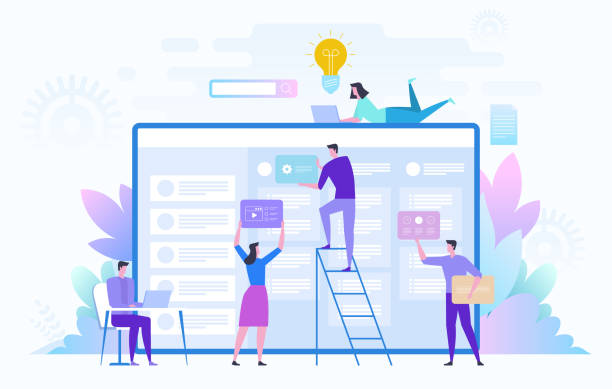
In multilingual website design, User Experience (UX) plays a vital role, and localization goes beyond mere text translation.
Localization means adapting the entire user experience to the cultural expectations and preferences of users in each region.
This includes the visual design of the site, element arrangement, colors, and even the type of images used.
For example, the color red symbolizes good luck in some cultures, while in others, it can symbolize danger or anger.
Text direction (right-to-left or left-to-right) is also an important factor that should be considered in UI/UX design.
For languages like Persian or Arabic, the site layout should be designed to be read from right to left.
Furthermore, you should adjust date formats, time, currency units, and measurement systems (such as weight and volume) according to local standards.
Using appropriate fonts for each language is also very important; fonts that look good in one language may not be readable or visually appealing in another.
Monitoring user experience and gathering feedback from native-speaking users can help identify weaknesses and facilitate continuous improvement.
Ultimately, the goal of multilingual web design is to create a seamless and comfortable experience for the user, regardless of their language or geographical location.
The more users feel that your site is designed for them, the more likely they are to engage with it and become loyal customers.
Localization is deeper than translating words; it is a complete experience that brings trust and user satisfaction and is the cornerstone of a successful multilingual platform.
Challenges and Common Errors in Designing a Multilingual Site

Creating a multilingual website design, despite its numerous advantages, is not without challenges.
Ignoring these challenges can lead to a costly and unsuccessful project.
One of the most common errors is literal translation, which results in unnatural, amusing, or even offensive texts.
This problem is especially true for idioms and colloquialisms that require deep localization.
Another challenge is content management.
As the number of languages increases, managing and updating content can become very complex and time-consuming, especially if a suitable Content Management System (CMS) for multilingualism is not used.
Choosing an inappropriate CMS is one of the biggest technical errors.
Some CMSs do not natively support multilingual capabilities, and adding them requires complex and sometimes costly plugins.
International SEO issues can also be challenging, including incorrect implementation of Hreflang tags, duplicate content problems, or improper geographical targeting settings in tools like Google Search Console.
Furthermore, neglecting website loading speed in different regions of the world can severely degrade the user experience.
If users in a specific region encounter a slow site, they are likely to leave it.
Finally, the lack of a clear strategy for continuous maintenance and updating of multilingual content can lead to outdated information and loss of site credibility.
A multilingual website design project requires meticulous planning, selection of appropriate tools, and collaboration with experts in translation and localization to avoid these common errors and create a successful and efficient website.
Suitable Tools and Platforms for Multilingual Website Design

For success in multilingual website design, choosing the right tools and platforms is of paramount importance.
A Content Management System (CMS) that natively supports multilingual capabilities or provides this functionality through powerful plugins is crucial.
WordPress, with plugins like WPML or Polylang, is one of the most popular options for building a multilingual website, offering high flexibility.
Joomla and Drupal are also strong CMSs that provide multilingual capabilities either natively or with dedicated extensions.
For larger businesses and custom solutions, frameworks like Laravel or Ruby on Rails can be used, but they require specialized developers.
In addition to CMS, the use of Translation Management Systems (TMS) such as Smartling, Phrase, Trados, and MemoQ is also recommended.
These tools help manage the translation process, maintain terminology consistency, and reduce translation costs in the long run.
To improve website loading speed and deliver content to users worldwide with minimal delay, using Content Delivery Networks (CDNs) like Cloudflare or Akamai is essential.
CDNs store cached versions of your site on servers close to users, which significantly increases loading speed.
Furthermore, web analytics tools like Google Analytics are highly important for tracking website performance in each language and region.
The correct selection of these tools can make the multilingual website development process simpler, more efficient, and more successful.
Measuring Success and Performance Analysis in Multilingual Websites

After implementing multilingual website design, the next crucial step is measuring its success and analyzing its performance.
For this purpose, web analytics tools like Google Analytics are very useful.
These tools allow you to track inbound traffic to each language version of the site, user behavior in each language (such as time on site, bounce rate, and pages viewed), and conversion rates separately.
Using language and geographical location reports in Google Analytics, you can understand which countries and languages users are coming from and which language versions receive the most visits.
Data analysis helps you identify the strengths and weaknesses of your multilingual site.
For example, if you observe a very high bounce rate in a particular language, it may indicate problems in translation, localization, or user experience in that language.
Tracking goals and conversion rates for each language is also very important.
Are French users converting into customers as much as English users? This information can help you adjust your marketing and optimization strategies for each target market.
Furthermore, monitoring keyword rankings in different search engines for each language and region, through SEO tools, is important.
This allows you to evaluate the impact of SEO optimization for a multilingual site and make necessary changes if needed.
Continuous measurement and precise data analysis are the backbone of your multilingual website’s continuous improvement and are essential to ensure the achievement of business goals in global markets.
Are you worried about losing customers because you don’t have a professional e-commerce website?
With e-commerce website design by RasaWeb, forget these worries!
✅ Significant increase in sales and visitor-to-customer conversion rates
✅ Professional and user-friendly design that builds customer trust
⚡ Get a free consultation from RasaWeb
Future Trends in Multilingual Website Design

The world of multilingual website design is constantly evolving, with new trends emerging that will shape the future of this field.
One of the most important trends is Artificial Intelligence (AI) and Machine Learning (ML) in translation and localization.
While traditional machine translation has limitations, AI is improving the accuracy and quality of translations and can translate content instantly.
These technologies will be particularly useful for high volumes of content and rapid updates.
However, human intervention will still be necessary to ensure cultural accuracy and linguistic nuances.
Another trend is greater personalization based on language and geographical location.
The future of multilingual websites goes beyond simply providing content in different languages; it includes displaying highly specific content relevant to the user’s individual interests and needs, based on data collected from their behavior.
This includes localized product recommendations, news, and advertisements.
Additionally, the increasing use of voice search and smart assistants increases the need to optimize content for multilingual voice responses.
Websites must be able to answer user questions in various languages and in a natural way.
Responsive multilingual web design is also gaining increasing importance, as most internet users access the web via mobile devices.
Websites must provide a flawless user experience in every language and on every device.
These trends indicate that building a multilingual website will become more complex and intelligent in the future, but will also provide more opportunities for connecting with global audiences.
Creating Multilingual Content for International Marketing
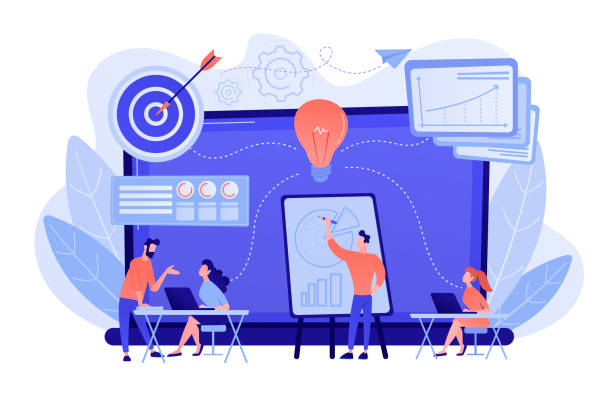
Alongside multilingual website design, the production and management of multilingual content are highly important for international marketing strategies.
Your content, whether blog posts, product descriptions, videos, or advertisements, must not only be translated but also localized to connect with target audiences in each market.
This means understanding cultural differences, linguistic sensitivities, and common idioms in each region.
For example, a marketing campaign successful in one country might be completely unsuccessful in another due to cultural differences.
Therefore, marketers must optimize their content for each specific language and region, including appropriate keywords for local SEO.
Content marketing on a global scale requires meticulous planning and coordination among different teams.
This includes creating a multilingual content calendar, assigning responsibilities for translation and localization, and monitoring content performance in each market.
Using multilingual keyword research tools to identify phrases that users search for in each language is crucial.
This helps you optimize your content to appear in local search results.
Also, social media platforms popular in each country should be considered, and content should be produced accordingly and in the local language.
Ultimately, success in multilingual content marketing depends on your ability to communicate effectively and meaningfully with audiences in their own language and culture, which significantly helps strengthen the brand and increase customer loyalty.
This approach ensures that your site and message are heard seamlessly worldwide.
Frequently Asked Questions
| Question | Answer |
|---|---|
| What is multilingual website design? | It is the design of a website whose content is available to users in several different languages, allowing users to choose their preferred language. |
| Why is a multilingual site important? | To reach international audiences, increase website traffic, improve user experience for non-Persian-speaking visitors, and expand business into global markets. |
| What are the benefits of having a multilingual site? | Increased international SEO, attracting new customers from different countries, enhancing business credibility and professionalism, and reducing bounce rate by providing understandable content. |
| What are the methods for implementing a multilingual site? | Using subdirectories (e.g., example.com/en/), subdomains (e.g., en.example.com), or separate country code top-level domains (ccTLDs) for each language (e.g., example.com and example.de). |
| Which URL structure is best for international SEO? | Subdirectories (like example.com/en/) are often preferred for SEO due to consolidating the main domain’s authority, although each method has its advantages and disadvantages. |
| How does a multilingual site affect SEO? | By providing content in different languages, the site appears in local search results for those languages, increasing click-through rates and traffic, and improving overall domain authority. Correct use of hreflang tags is crucial. |
| How is content translation managed? | Professional translators, machine translation tools (with human editing), or Content Management Systems (CMS) with built-in multilingual capabilities or relevant plugins can be used. |
| What are the common challenges in multilingual site design? | Managing translated content, maintaining design consistency across different languages, compatibility with Right-to-Left (RTL) languages like Persian and Arabic, optimizing SEO for each language, and choosing an appropriate URL structure. |
| How do I manage text direction (LTR/RTL) on a multilingual site? | For Right-to-Left languages (like Persian), you need to apply specific CSS styles to change text direction, element layout, and table direction. This is often done using the direction: rtl; property and other related settings. |
| How can users change the site’s language? | Typically, by using a button, dropdown menu, or language selector widget clearly placed in the site’s header or footer. Automatic detection of the user’s browser language and suggesting a language change is also common. |
And other services of RasaWeb Advertising Agency in the field of advertising
Smart SEO: Transform sales by using real data.
Smart Digital Branding: Designed for businesses looking to increase click-through rates through marketing automation.
Smart Website Development: Designed for businesses looking for user engagement through custom programming.
Smart Customer Journey Map: Transform digital branding with Google Ads management.
Smart Advertorial: A creative platform for improving campaign management with custom programming.
And over hundreds of other services in the field of internet advertising, advertising consultation, and organizational solutions
Internet Advertising | Advertising Strategy | Advertorial
Resources
Multilingual Site Strategy Global Market Expansion Persian Web Design Trends International SEO Guide
? In the fast-paced world of digital, RasaWeb Afarin Digital Marketing Agency, with its expertise and experience, is the guide to your business’s success. From personal website design to comprehensive digital campaigns, we are by your side to ensure a powerful and impactful online presence.
📍 Tehran, Mirdamad Street, next to Bank Markazi, Southern Kazeroun Alley, Ramin Alley, No. 6

